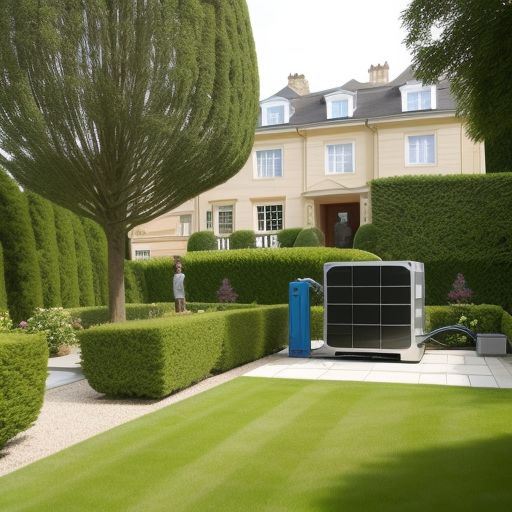US-UK relations under Trump II – Good or Bad?
Published 10th November 2024
Congratulations to President Donald Trump on his re-election. Despite an initial wave of scepticism from establishment media and concerns voiced by Treasury officials, market reactions quickly turned positive, driven by optimism about Trump’s pro-growth economic policies.
Financial stocks rallied, anticipating continued deregulation, while energy stocks surged in response to expectations of support for the fossil fuel sector.
A strong U.S. economy benefits the free world by driving growth and enhancing investment returns, which in turn supports UK financial markets and bolsters the pension funds that rely on them
Anthony Royd

Anticipated Benefits of a Trump Presidency
The UK stands to benefit from Trump’s strong support for Brexit and his admiration for British sovereignty and culture. Trump has consistently valued the UK as a key ally, contrasting with the EU-first approaches of previous administrations, emphasising robust trade, security cooperation, and military alliances.
His commitment to NATO, urging fair contributions, underscores the importance he places on balanced partnerships.
However, recent actions by Treasury officials to delay defence spending target of 2.5% of GDP for a decade, so threatening UK’s commitment to Nato, which undermine the alliance and the efforts by UK leaders to strengthen US-UK relations under Trump’s leadership. It’s essential that UK leadership reaffirms its commitments, and Labour’s Starmer should assert authority over the Treasury to ensure this critical alliance remains secure.
Heat pumps v Insulation
Anthony Royd questions the Logic of Replacing Gas Boilers with Heat Pumps to Reduce Heating Costs
Switching from gas boilers to heat pumps is often promoted as a key measure for reducing heating costs and carbon emissions in the UK. However, when examined closely, the case for air-source heat pumps (ASHPs) as a cost-effective solution, particularly in very cold climates, reveals several practical and financial limitations. This raises the question: would the UK’s funding for heat pumps yield better results if it were instead directed toward insulating homes?
Performance Challenges of ASHPs in Cold Weather
One of the main considerations is that not all heat pumps perform equally in cold weather. While ground-source heat pumps (GSHPs) maintain higher efficiency even in freezing conditions, they are costly to install and unsuitable for many properties due to the space required for ground loops. ASHPs, on the other hand, are more widely compatible but encounter significant limitations in extreme cold. In very low temperatures, ASHPs rely on an energy-intensive defrost cycle to melt ice accumulation, temporarily diverting heat from indoor heating.
This can actually lead to higher electricity usage, particularly in prolonged freezing conditions, which undermines the primary goal of reducing heating costs.

Additionally, ASHPs sometimes require supplemental heating in colder weather, as their efficiency decreases with the outside temperature. Consequently, the reliance on additional electric or gas heating during cold spells may offset the cost-saving benefits of switching from gas boilers. This raises the question of whether ASHPs are truly an optimal choice for UK households in colder regions, where consistent performance during winter is essential.
Installation Costs and Requirements for Heat Pumps
The financial considerations for heat pump installation also highlight potential drawbacks. Depending on the type of heat pump, installation costs range from £8,000 to £18,000. Although the UK government’s Boiler Upgrade Scheme (BUS) offers grants of up to £7,500, homeowners still face out-of-pocket expenses ranging from £500 to £10,500. This can be a substantial burden, especially for middle- to low-income households.
Further complicating the adoption of heat pumps is the requirement for properties to meet at least a “D” rating on the Energy Performance Certificate (EPC). For many older properties, achieving this rating requires significant insulation upgrades, which carry additional costs. Based on recent estimates, installing cavity wall and loft insulation can cost between £1,400 and £3,500, depending on the property type. While these upgrades improve the overall energy efficiency of a home, they add to the initial expenses associated with switching to a heat pump.
Cost-Effectiveness of Insulation as an Alternative
Insulation, on its own, can lead to substantial heat savings—estimates suggest that upgrading insulation can reduce energy consumption by 20% to 40%, depending on factors such as initial insulation levels and property type. Insulating a terraced or semi-detached home, for instance, costs between £1,400 and £2,700, which is considerably less than the out-of-pocket expenses for a heat pump installation. Even for a detached house, insulation upgrades are roughly half the cost of the BUS-subsidised heat pump installation. Given these savings, investing in insulation could significantly reduce heating costs and carbon emissions for a much larger number of homes.
Additionally, directing funds toward insulation would benefit vulnerable populations, such as low-income households and the elderly, who may be disproportionately affected by rising energy prices and are less likely to afford heat pump installation. In a time when the government is scaling back benefits for these groups, providing support for home insulation could offer immediate relief from high heating bills, while also contributing to national carbon reduction goals.
Doubling Carbon Savings with Insulation
From an environmental perspective, funding insulation upgrades over heat pump installations could potentially double the carbon savings. Since insulation is less costly, twice as many households could be reached with the same investment, thus maximising both financial and environmental returns. For instance, with the approximate cost of insulating a detached home at £3,500—half the cost of a subsidised heat pump installation—the government could retrofit twice as many homes, thereby doubling the energy and carbon savings compared to focusing solely on heat pumps.
Conclusion: Prioritising Insulation Over Heat Pumps
In light of these factors, the rationale for prioritising heat pumps over insulation warrants reconsideration. While heat pumps may offer long-term savings under optimal conditions, they present challenges in cold weather, incur substantial installation costs, and require additional insulation work to be effective. Insulation, on the other hand, provides immediate heating cost reductions at a fraction of the price, benefits the most vulnerable households, and supports the UK’s carbon reduction goals more broadly.
Given the current fiscal environment, prioritising insulation could deliver greater economic and environmental benefits, helping more households reduce heating costs and improving energy efficiency across the country.
Redirecting funds to support insulation over heat pump installations is a more logical and equitable approach, particularly for assisting those most in need and making the most of limited public resources, or Is It Me!